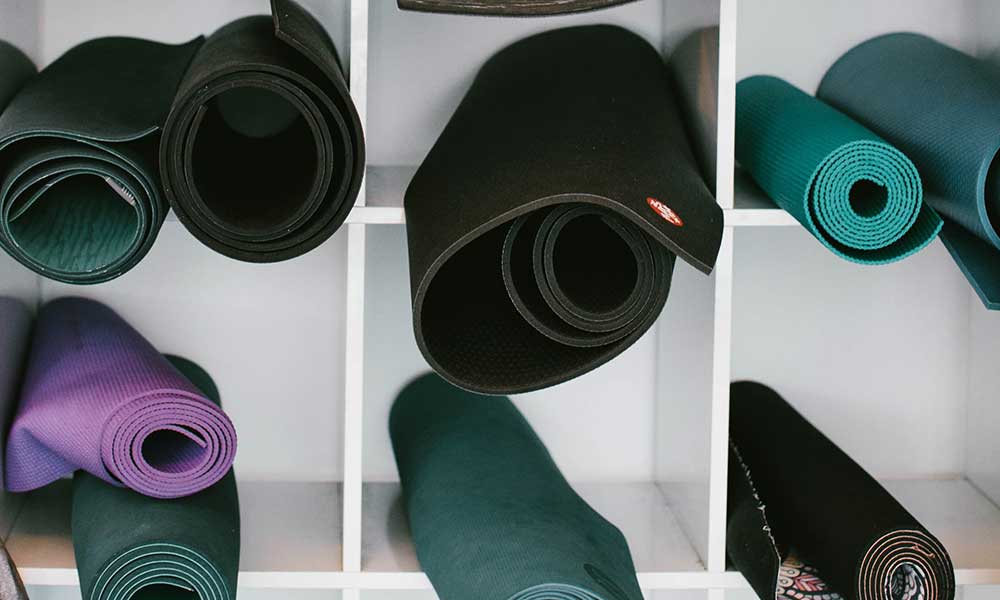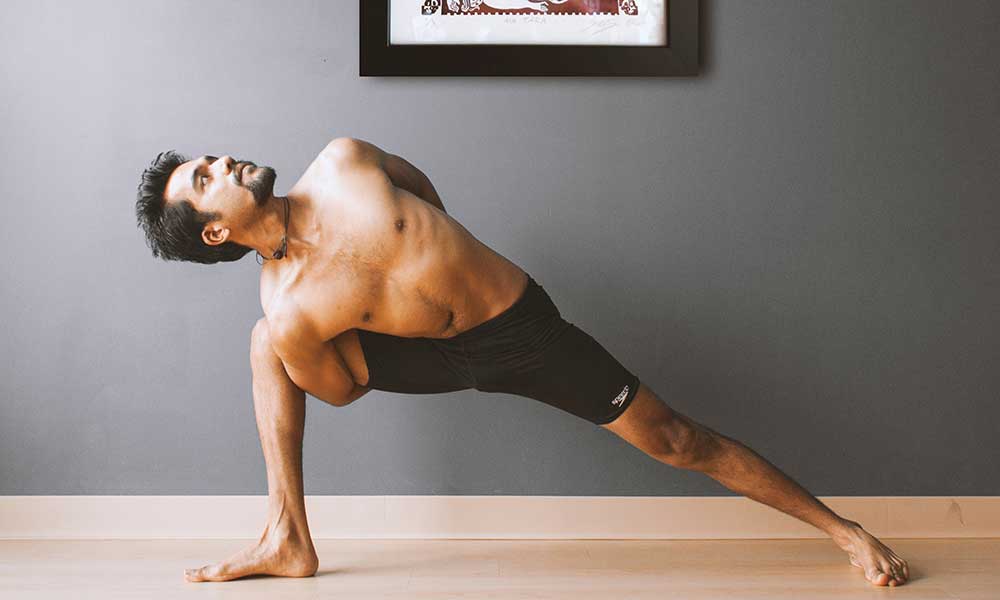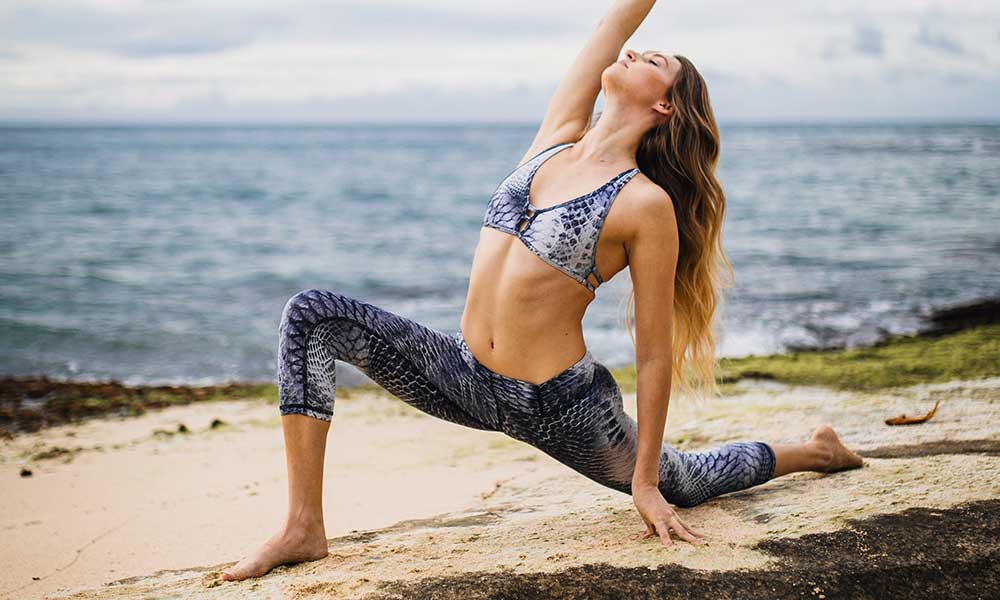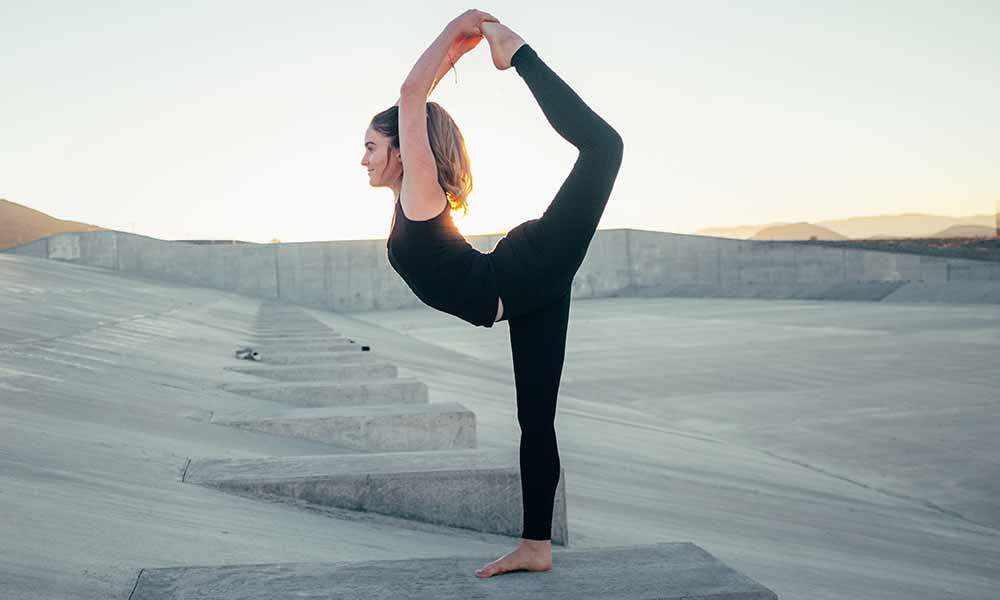It’s no secret that practicing yoga can result in a multitude of physical and mental health benefits.
One of the amazing things about yoga is that there is so much to be gained from the exercise without a lot of expensive equipment.
Whether you are practicing Ashtanga Yoga or Hatha Yoga, the one thing you will always need is a trusty yoga mat.
Due to yoga’s increasing popularity, yoga mats of all makes and models have landed on the market in recent years.
With so many options to choose from, it can be hard to know what you should shop for.
In this article, we’re talking about what to look for in a yoga mat.
What To Consider When Shopping For A New Yoga Mat
Whether you are a seasoned yogi or a beginner just budding into the world of yoga, a yoga mat is essential to your practice.
Yoga requires you to maintain or flow through poses for both short and long periods of time while stretching out your muscles.
Using anything other than a yoga mat such as a towel, blanket or cushion could inhibit your ability to perform these poses and stretches, and can also cause injury.
Yoga mats are designed to help your hands and feet grip comfortably while flowing through the postures.
Here are the key features to look out for when shopping for a yoga mat:
- Thickness
- Material
- Texture
Yoga Mat Thickness
Yoga mats generally range in thickness from about 1/16 inch to ¼ inch.
1/16-inch mats are as thin as they come, giving you a strong connection to the earth below you.
While this is an ideal thickness for practicing balance postures, the downside of using a thin yoga mat is that there isn’t as much cushion as you would get from using a thicker mat.
A ¼-inch mat is typically as thick as they come and works excellent for those in need of extra back support during certain poses such as core exercises, inversions, and other postures that might press your bones into the ground.
If you want a thicker mat with extra padding, but don’t want to go as thick as 1/4 inch, you might want to try a standard yoga mat that is right in the middle at 1/8-inch thickness.
Yoga Mat Material
In today’s yoga-obsessed world, you can choose a yoga mat made from the material of your choice.
Most standard yoga mats are made from inexpensive PVC, eco-friendly natural rubber, organic cotton, or TPE (thermoplastic elastomer).
Here is a breakdown of the most common materials used to make yoga mats:
- PVC: This material is made from plastic and is highly durable. It’s easy to clean and grips to the floor exceptionally well. The main drawback of a PVC mat is that it is non-absorbent, so don’t expect it to absorb sweat. While it is latex free for our yogis with a latex allergy, it isn’t biodegradable and therefore not quite as environmentally friendly as some of the other materials.
- TPE (thermoplastic elastomer): This material is man-made of plastic and rubber. TPE mats generally might be more environmentally friendly than PVC, and some are 100% recyclable. This type of yoga mat isn’t as sturdy as a PVC mat, however they offer the same thickness and great traction.
- Eco/natural mats: The most environmentally friendly yoga mats come from a variety of natural materials such as natural rubber, organic cotton, and jute. When comparing these mats to other options, they tend to not have as much added grip on the floor. However, the natural texture of the yoga mat will offer you more traction. Eco mats won’t last as long as their PVC peers, but if eco friendliness is your number one priority, a natural-made yoga mat might be your best bet.
Yoga Mat Texture
The texture of your yoga mat is important because it is responsible for the amount of traction it provides.
You need a yoga mat with great traction to prevent you from slipping and sliding during your yoga practice.
The more traction you have, the easier it is for you to find balance in certain postures.
If you don’t care too much about having a yoga mat with super strong traction and are looking for something smoother, a PVC mat is the way to go.
If you are interested in a yoga mat with a bumpy texture, look for one made of natural materials.
Jute, rubber and cotton yoga mats typically have a pattern that is raised and tactile, offering a natural roughness.
When it comes to finding the best yoga mat for your needs, don’t hesitate to shop around a bit before you buy.







